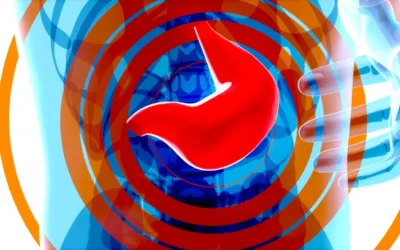Adrenal hemorrhage, a rare but potentially serious medical condition, occurs when blood accumulates within the adrenal gland due to trauma, underlying medical conditions, or spontaneous events. When such hemorrhages persist or are inadequately treated, they may lead to calcification—a process where calcium deposits form within the damaged tissue[1]. While often silent, adrenal hemorrhage calcification can signal past trauma and may have implications for future adrenal health. Understanding this phenomenon is crucial for diagnosing related complications, evaluating patient risk, and guiding treatment decisions.
Table of Contents
The Significance of Adrenal Hemorrhage and Its Calcification
The adrenal glands, located atop the kidneys, are essential to the body’s stress response, producing hormones such as cortisol, adrenaline, and aldosterone. When these glands bleed, the consequences can range from mild discomfort to life-threatening adrenal insufficiency[2]. Although adrenal hemorrhage itself is rare, it can stem from a variety of causes, including blunt abdominal trauma, sepsis, anticoagulant use, and underlying medical conditions like adrenal tumors or congenital abnormalities[3].
Adrenal hemorrhages can be challenging to diagnose because symptoms are often nonspecific. Patients might present with abdominal pain, low blood pressure, or even symptoms resembling acute adrenal insufficiency. When left undetected or untreated, hemorrhages may eventually calcify, indicating the body’s attempt to heal and stabilize the damaged tissue[4]. Adrenal calcifications are often discovered incidentally during imaging scans for unrelated issues, such as a CT scan or MRI, where they appear as dense, mineralized spots[1].
Causes and Risk Factors: When Hemorrhages Lead to Calcification
Calcification is a secondary phenomenon that follows unresolved or inadequately healed adrenal hemorrhages. In most cases, the hemorrhage is either misdiagnosed or left untreated, allowing time for calcium deposits to form in the scar tissue. The causes of adrenal hemorrhage are varied, but certain risk factors increase the likelihood of this condition and its calcification.
- Trauma: Blunt force trauma to the abdomen, such as from car accidents or severe falls, can rupture the adrenal glands, leading to hemorrhage. Traumatic injuries are one of the most common precursors to adrenal hemorrhage, particularly in individuals with concurrent conditions like blood clotting disorders[5].
- Anticoagulant Therapy: Patients taking anticoagulants, such as warfarin or heparin, are at increased risk for spontaneous adrenal hemorrhage. These medications, essential for preventing blood clots, can also make blood vessels more fragile, increasing the risk of rupture and subsequent calcification[6].
- Infection and Sepsis: Sepsis, an overwhelming infection causing systemic inflammation, can lead to bleeding in various organs, including the adrenal glands. The stress of severe infection may trigger adrenal hemorrhage, which, if severe or prolonged, can lead to calcification[7].
- Adrenal Tumors and Adrenal Cysts: Hemorrhage can occur in adrenal tumors, whether malignant or benign, due to increased vascularity within the tumor. Likewise, adrenal cysts—fluid-filled sacs in the adrenal gland—may also rupture, leading to hemorrhage and calcification[8].
- Congenital Adrenal Hyperplasia (CAH): In rare cases, congenital adrenal hyperplasia—a genetic disorder that affects cortisol production—can cause adrenal hemorrhage due to excess strain on the adrenal glands. Over time, this strain can result in calcification of damaged areas.
Diagnostic Approaches: Unraveling the Mystery of Adrenal Calcification
The diagnosis of adrenal hemorrhage and its calcification is often made incidentally, as symptoms may be subtle or entirely absent. Modern imaging techniques, particularly computed tomography (CT) and magnetic resonance imaging (MRI), are crucial in identifying adrenal calcifications[1]. These imaging methods reveal calcified deposits as bright, dense areas within the adrenal glands, often in the context of a past hemorrhagic event.
For patients presenting with adrenal calcifications, a detailed medical history and physical examination are essential to determine whether the calcification is related to a previous hemorrhage or other conditions. In cases where adrenal hemorrhage is suspected, hormone tests may be conducted to assess adrenal function, ensuring the gland is producing adequate levels of cortisol and aldosterone.
Treatment and Management: Addressing the Complications
Once adrenal calcifications are discovered, treatment depends on the patient’s overall health, the extent of adrenal damage, and whether the calcifications are causing symptoms. In many cases, adrenal calcifications do not require specific treatment. However, if they are associated with adrenal insufficiency—where the gland fails to produce sufficient hormones—patients may require hormone replacement therapy.
Hormone Replacement Therapy: In cases of adrenal insufficiency, patients may need life-long corticosteroid and mineralocorticoid replacement therapy to manage the body’s stress response and maintain electrolyte balance. This treatment helps prevent adrenal crises, which can be life-threatening if left untreated.
Surgical Intervention: In some rare instances, adrenal hemorrhages or calcifications may necessitate surgical removal of the affected gland, particularly if the calcifications are related to adrenal tumors. Adrenalectomy, the removal of the adrenal gland, is a last resort, typically considered only when there is a significant risk to the patient’s health.
Prognosis and Long-Term Considerations
Most individuals with adrenal hemorrhage calcification live without any long-term complications, especially if the calcifications are found incidentally. However, for those with adrenal insufficiency or underlying conditions, ongoing monitoring and medical management are essential to avoid potential adrenal crises. Regular imaging may be required in patients with known calcifications to track any changes in size or appearance that could signal complications.
Conclusion: Unveiling the Layers of Adrenal Hemorrhage and Calcification
Adrenal hemorrhage calcification, though rare, represents an intricate intersection of trauma, systemic conditions, and the body’s healing processes. Understanding this condition not only aids in the accurate diagnosis and treatment of adrenal hemorrhages but also underscores the importance of timely intervention to prevent long-term complications. With advancements in medical imaging and hormone therapy, patients with adrenal hemorrhage calcifications can live normal, healthy lives, provided they receive appropriate care and monitoring.
References
- Radiopaedia.org. (2018). Adrenal calcification. https://radiopaedia.org/articles/adrenal-calcification?lang=us
- Hamrahian, A. H., et al. (2023). Etiology, morphology, and outcomes of adrenal calcifications in 540 patients. European Journal of Endocrinology, 189(2), 295-303.
- Vella, A., et al. (2023). Adrenal Hemorrhage. In StatPearls. StatPearls Publishing.
- Rao, R. H. (1995). Bilateral massive adrenal hemorrhage. Medical Clinics of North America, 79(1), 107-129.
- Rao, R. H., et al. (1989). Bilateral massive adrenal hemorrhage: early recognition and treatment. Annals of Internal Medicine, 110(3), 227-235.
- Rosenberger, L. H., et al. (2011). Bilateral adrenal hemorrhage: the unrecognized cause of hemodynamic collapse associated with heparin-induced thrombocytopenia. Critical Care Medicine, 39(4), 833-838.
- Rao, R. H. (1995). Bilateral massive adrenal hemorrhage. Medical Clinics of North America, 79(1), 107-129.
- Bin, X., et al. (2011). Diagnosis and management of adrenal hemorrhage. Journal of Clinical Endocrinology & Metabolism, 96(7), 1998-2005.





0 Comments